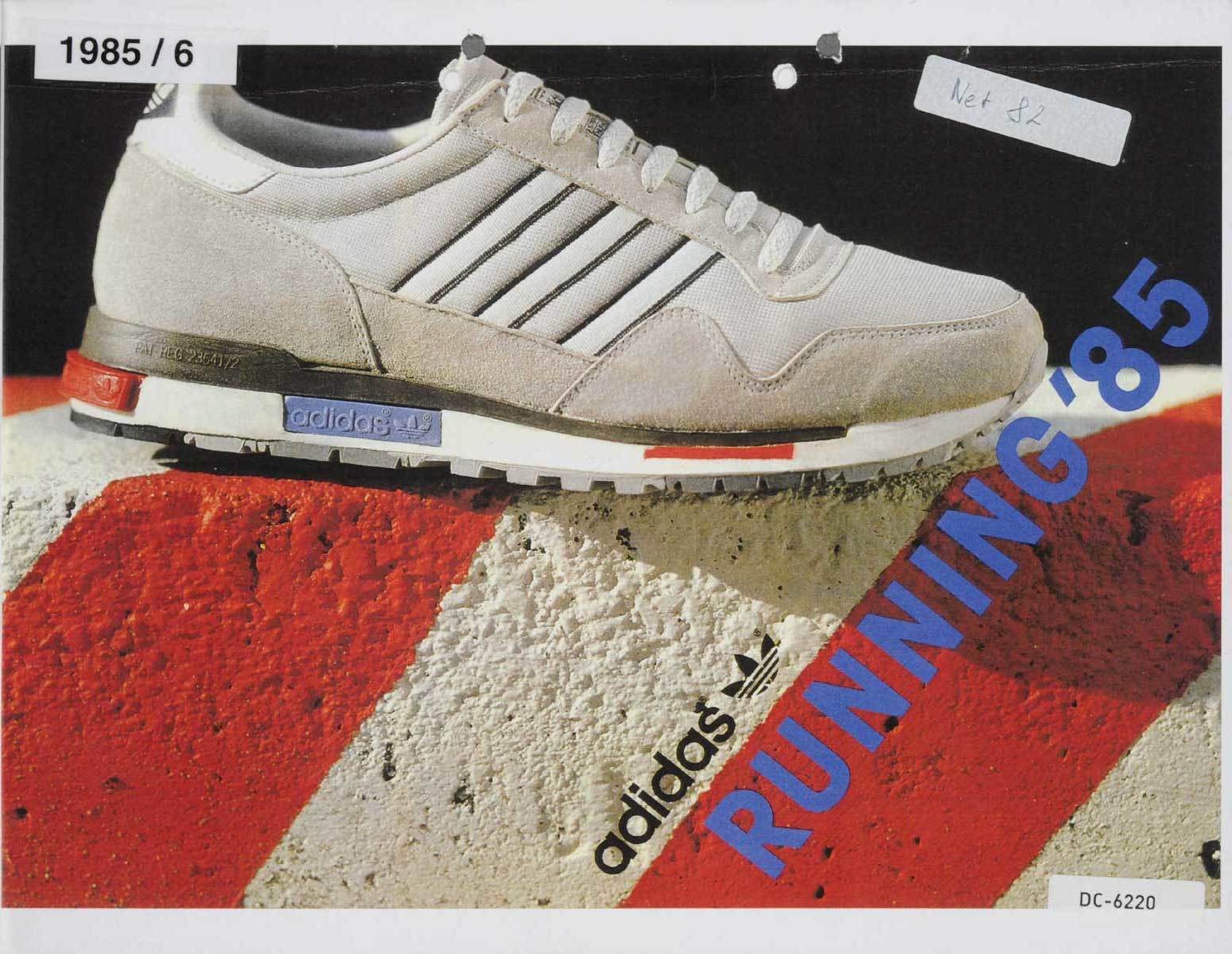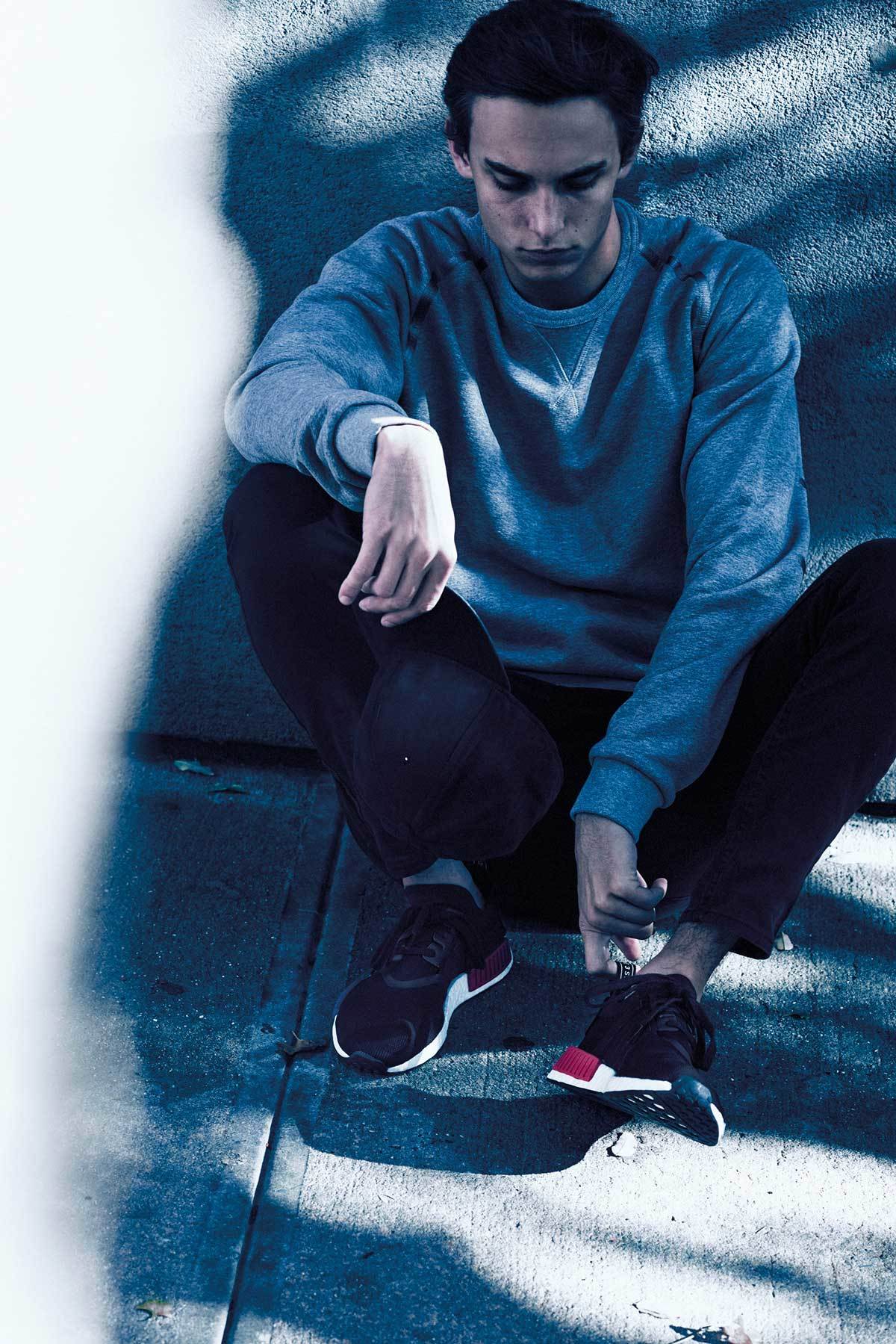While you may not know his name, Nic Galway is the man behind your favorite trainers. In his role as vice president of global design at adidas Originals, he’s designed and overseen the inception of the Tubular, worked closely on the company’s longstanding Y-3 collection with Yohji Yamamoto, and in his work with Kanye West has helped make the Yeezy Boost the official Shoe of the Year. From his base in Germany, he leads a 55 person team that spans footwear, apparel and accessories across adidas offices in Germany, Portland and Tokyo.
The brand has just launched its next phase of innovative footwear with the release of NMD, fusing together shoes from the adidas archive with the technology of Primeknit and Boost to create a completely new shoe for modern millennials. Direct from adidas HQ in New York, we chatted with Nic after the launch event for NMD to discuss what the unveiling of the shoe means for the brand…


What were your main sources of inspiration for designing the NMD?
When I started designing NMD with my creative team, we saw just such a great opportunity. If you look at brands overall, there are so few that have what we have, we have such a great past, we have our archive and then we have the best innovations in the industry with the Boost and Primeknit. So we just wanted to connect those two elements together and we talked a lot about when you make something very futuristic, it’s sometimes hard for people to connect with but when you inform it with elements of the past it makes it more attainable and easier to understand. The NMD was very much the mindset for that. We were thinking about how lives have changed, what role do we want this to play in the lives of people today so that was kind of the briefing that we gave ourselves.
Did you look back at a specific shoe in the archive for inspiration?
Yeah we looked at three shoes specifically. The Micropacer, the Boston Super and the Rising Star. The reason we selected those is they were all designed in the mid 80s and the mid 80s was such a great moment in culture. The Apple Mac was made in that era for example. The future just seemed limitless and you saw that in design. I also just love how graphic those shoes were, if you look at them from a distance you can instantly recognize the color blocking on the sole and it was all there for a purpose.

How does the NMD fit into someone’s everyday life?
We were thinking about our needs and how we travel all the time. When you live in your own city, of course you’ve got everything around you, all your stuff. But when you travel, you can’t bring everything, you have to be selective. If you take things which you like because they’re stylish, and then you want to walk around a city, you very quickly realize that’s not enough as it might not be practical. Conversely, if you take something very functional, but you don’t like how it looks, that’s also not right. So we really wanted here to fuse those worlds together. When you see this shoe from a distance, it looks like a classic but when you get close up and you see how light the shoe is, how packable it is, the comfort it gives you, it’s something you’d hopefully always want to take with you.
Why the name NMD?
If we had given it a descriptive name, it puts in people’s minds a particular path of work. Adidas has always had codes, ZX, 350, 750 and I love those. We of course discussed modern nomadic lifestyles, we all live them. We also discussed what “new” looks like, what “modern” looks like.

How does it differ from the other shoes that you’ve designed?
It shares a lot of the same thinking for sure. It’s very much my way not to be too protective of the past because I don’t believe that was the mindset of the people who created the shoes first. I can reference many different parts of my collective memory and here I really wanted to create a sneaker that from a distance, if you were wearing it, someone could feel that maybe you were wearing one of the shoes from adidas’ past but as you get closer people would notice a completely new sneaker. I think that’s what differentiates this from something like the Tubular which was so instantly recognizable. I find the real strong challenge of working in Originals is how can you constantly connect the past and the future and yet always be true to a pioneering spirit.
What makes a shoe iconic? Is there a recipe for it?
I’m actually sure there isn’t. We talk about culture and we talk a lot about iconic, but I’m very clear about not being able to decide these things, culture will decide. The consumer will decide what is iconic.
It’s been a really defining year for the brand, you guys have been on the forefront of both high-end clothing and streetwear. What are you looking to achieve next year?
It’s very dangerous to think you have formula because the next generation will want something different. I like to think in two ways, one is ‘how do you evolve?’ and the other is to think ‘what do you already have?’ I really challenge the creative teams to say ‘that’s amazing, we should be really proud of this but let’s put it to one side for a week or two and really think about the polar opposite and just see where it takes us.’ We might not ever go there, but it’s a really healthy exercise. The only thing I’d say that it is an absolute constant is that I’m a strong believer in never staying still. To pioneer and to challenge is key. I think we have to do that because so few brands can. I hope and I believe that people expect adidas to surprise and to challenge.
Credits
Text Lynette Nylander
